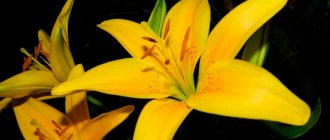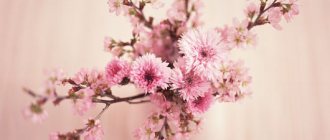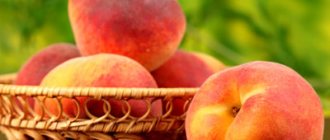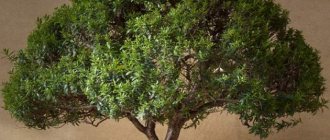Orange, a plant from the Rutaceae family, was known in Europe as bitter orange or Chinese apple. In China, it was customary to give each other the fruits of this tree for the New Year, which was interpreted as a wish for a long life, happiness and wealth. In Japan, the orange flower symbolizes pure love.
V. K. Winterhalter. Queen Victoria in her wedding dress. The bride's head is decorated with a wreath of fleur d'orange - the flowers of the orange tree. The fashion for fleur d'orange was introduced by W. Scott, who described a similar custom in the novel Ivanhoe. Since the 30s. XIX century fleur d'orange has become an indispensable attribute of the bride's outfit, symbolizing purity and innocence
Saxon Order of the Crown of Ruth
Hercules brings Hesperides apples to Atlas. Ancient Greek marble sculptural group. Some researchers believe that the golden apples that grew in the gardens of the Hesperides were actually oranges
Orange in heraldry
Coat of arms of the Orange Republic. This state received its name from the Orange River flowing in South Africa, in turn named after the Prince of Orange
Coat of arms of the French Duchy of Orange, the name of which is translated from French as “orange”
Coat of arms of Oranienbaum (now Lomonosov), the name of which is translated from German as “orange tree”
In Ancient Greece, the fruit of this tree became an attribute of the goddess Diana. In Christianity, this plant was sometimes associated with the biblical Tree of Knowledge. Orange was an attribute of the Virgin Mary, symbolizing purity, chastity and virginity. Sometimes this fruit was depicted in the hand of the baby Jesus as a symbol of God's atonement for the sins of mankind. The bitter orange, which was popular in Europe until the 15th century, when the Portuguese introduced sweet varieties of orange, became a symbol of fate and fate.
Secrets of the floating orange
There is probably no person in the world who has visited Jaffa and not seen there the famous Jaffa hanging orange tree, either blooming and fragrant with a dizzying aroma, or hung with small fruits, or even both the first and the second at the same time.
Everyone saw it, but not everyone thought about the meaning and significance of this work of modern art. And today we are together with Alena
we want to talk to you about this. And I, overcome by my morbid curiosity, tried to look under the tree’s “skirt” and look at it with the eyes of ants crawling on the ground
The Hanging Orange, or more precisely the “Floating Orange Tree,” was conceived and created by sculpture Ran Morin in 1993. As if hatching from a huge egg, the tree grows through a gap in a ceramic oval pot suspended on strong ropes from the walls of neighboring houses. And there is much more meaning in this tree than might seem at first glance.
Firstly, orange. Why orange? The same Ran Morin supplied olives in Jerusalem, and acacia in Eilat. Each of these trees - and these choices - has its own meaning, its own code.
Once upon a time, the word Jaffa was almost synonymous with the word “orange”. Immersed in the greenery and aromas of heavenly orange groves, Jaffa gave the world beautiful juicy, sweet “Chinese apples” (orange = “apple Xing”). Even we, in our Soviet childhood, feasted on insanely delicious “Moroccan” citrus fruits on New Year’s, not suspecting—and not particularly interested in it—that they actually grew up in the blessed Holy Land of Israel. And for a long time we would have been able to delight the world with this exotic and healthy fruit, if not for our sworn Arab friends, who poisoned the orange harvest with mercury in the late 70s. The subsequent deaths of European children brought huge financial losses to Israel, but at the same time forced it to turn from an agricultural economy to an economy based on intelligence - in which our country has achieved unprecedented success.
3. This is what a tree looks like when you look at it from the ground
The fruits of the tree are not tasty, since the tree is not grafted. The plant itself is replaced every few years, as the roots grow and do not fit in the tub
There are no longer endless orange groves in Jaffa. But the orange remained as a sign, as a symbol, as a memory.
Not only history, but also philosophy worried Ran Morin when he created his floating orange. The tree in the “egg” once again reminds us how year after year we, creatures growing in stone tanks, shells, torn from the earth, from the roots of our ancestors, move further and further from nature, how the ties between us are broken, sometimes completely and irrevocably.
In Turkish times there was a law that said that if you have a tree or bush that bears fruit, and it doesn’t matter whether you eat the fruit or sell it, you must pay tax. However, this law did not apply to trees and bushes that grew in tubs and pots. Therefore, there were clever people who placed tubs in their yards in which several trees grew at once, and thus avoided paying the tax. It is quite possible that Morina symbolizes this historical fact.
There is another beautiful image that is seen in this work: the Jewish people, torn out of their land, scattered throughout the world, but continuing to live and fight and bear fruit.
In the not very long history of the modern state of Israel, there have already been trees uprooted from the ground and transplanted to another place (in this way they very much resemble any new Israeli who has repatriated). Almost a hundred years ago, Churchill visited Tel Aviv. The local authorities will give him a meeting worthy of him. The gala dinner was organized at the Galei Aviv Casino restaurant, which once stood at the beginning of Allenby Street (where the beach is today). But there was one problem - the young city had very bad landscaping. And then the mayor of Tel Aviv, Dizengoff, ordered to dig up trees growing in other places and bring them to the restaurant. There these trees were simply dug into the sand without any roots, because the idea was that “they will stand for a couple of days, but no more is needed.”
...after a hearty and tasty dinner, a rejuvenated Churchill left the restaurant. Lighting a cigar, he leaned against a tree, and it, devoid of roots, could not withstand the weight of the overweight Prime Minister and fell. Churchill, of course, immediately understood everything and, turning to Dizengoff, said: “Without roots, Mr. Dizengoff, you won’t succeed.”
Ran Morin's grandfather witnessed this story and he told it to his grandson. And it may very well be that this story also influenced the idea of creating a floating orange tree.
And therefore we need to hold on to the earth, so that, like Antaeus, we do not be broken by alien forces, or like the trees on Allenby Street do not fall from the slightest breeze; to grow to this land for us, a people who have been torn off from their roots for many years, which is what this environmental sculpture symbolizes.
Root crown
The green rue crown was the traditional symbol of the Saxon dukes and Saxony itself. After the establishment of the Wettin dynasty in the duchy, they adopted this symbol into their coat of arms. Rue itself in Western Europe symbolized innocence, purification, and was used to flavor holy water in churches. Rue was also believed to have the ability to ward off evil spirits and was used in protective rites
Coat of arms of the federal state of Saxony, Germany
Orange talisman and its feng shui meaning
Orange color occupies a separate pedestal in the philosophy of Feng Shui. It has a very beneficial effect on a person’s ability to communicate with other people, as well as well-being. All this is because the energy of this color is very positive. Orange awakens joy and strength in a person, makes him cheerful and cheerful.
This color is also a symbol of celebration and happiness in Feng Shui. It helps to make one’s desires come true, brings inspiration, and charges a person with new strength. Of course, oranges also have their own special meaning and have very positive energy. In every prosperous home there is always a vase or plate with oranges somewhere.
Experts in ancient Eastern teachings believe that oranges bring happiness and abundance. For example, in China it is customary to give oranges to your loved ones on all kinds of holidays. In this way, people wish good luck and prosperity. So you should definitely bring this orange fruit to your friends and family.
Orange Dynasty
The Orange-Nassau dynasty ruling today in the Netherlands established itself on the Dutch throne during the first bourgeois revolution in Europe, when at the end of the 16th century. The United Provinces, after a bloody struggle, freed themselves from the rule of the Spanish Habsburgs. Initially, the title of Orange belonged to the rulers of a small duchy in the south of France. Since the word “orange” is translated as “orange,” this fruit, as well as the color orange, became symbols first of the dynasty and then of the Netherlands.
Prince William I of Orange, Stadtholder of the Republic of the United Provinces.
Share link
MYTHOLOGY
As a symbol of fertility , the orange has long been associated with love and marriage. According to legend, the orange was the “golden fruit” that Juno gave to Jupiter on her wedding day. Greek myth tells that Hera received a tree with golden apples as a wedding gift from Mother Earth - Gaia. These golden apples grew in a garden in the far west, which was guarded by the daughters of Night - the Hesperides. According to another version, Gaia gave golden apples to Zeus when he married Hera.
Three golden apples are picked by Aphrodite in the grounds of the temple dedicated to her in Cyprus and given to the young man Hippomenes, responding to his prayer. A young man in love with Atalanta can only marry her by defeating her in a race; meanwhile, no one has yet managed to overtake the girl. On the advice of Aphrodite, the young man, whom Atalanta begins to catch up with, throws a golden apple and Atalanta, surprised by the unusual fruit, stops to pick it up. A technique used three times allows Hippomenes to run first and marry his beloved.
“The three golden apples are three extra months added to the octaeteris (eight-year cycle) to keep the Moon in rhythm with the seasons of the solar year. They fall at Atalanta’s feet every time it seems that she is about to overtake Hippomenes, who personified the Sun. The number of apples means that the Moon will marry the Sun at the end of the eight-year cycle, which it actually does. In the earliest version, the octaeteris - 99 lunar months - lasted slightly longer than 8 years of 365 days each. This small discrepancy, about half a day, is the distance by which Hippomenes overtook Atalanta.”
On about. Sardinia, when the groom’s father sent carts to collect the bride’s dowry, “bouquets of flowers or oranges were attached to the horns of the oxen harnessed.” A clear example of the distortion of original ideas is the carnival character su tiaulu (devil, devil) with an orange. In Christian iconography, the devil was sometimes depicted with oranges strung on horns, wearing a fiery red close-fitting robe , a black mask and a tail.
The custom of decorating the bride with orange flowers (orange blossom) came to England from France around 1820. The orange tree is also used in place of the apple or fig tree when depicting the fall of man in paradise.
Used materials:
- Apollodorus, Mythological Library;
- Edwin K. Krapp. Astronomy. Legends and traditions;
- ON THE. Krasnovskaya. Origin and ethnic history of the Sardinians;
- John Foley. Encyclopedia of signs and symbols.
- Apricot
- Quince
- Acacia. Part 1
- Acacia. Part 2
- Acacia. Part 3
- Alchemical tree
- Orange. Part 1
- Orange. Part 3
Dosage forms, method of using orange
Fresh oranges
, eaten in the morning on an empty stomach and in the evening before bed (fruits can be replaced with juice), improve appetite and digestion processes, and help with constipation.
Orange juice
, consumed 30 minutes before meals 3 times a day, 1/2 cup, helps destroy bladder stones and helps get rid of scurvy.
Orange peel decoction
. Brew 1 cup boiling water 1 tsp. crushed peels, heat them over low heat for 10 minutes, leave for 30 minutes, strain. Drink 1/3 glass 3 times a day to ease heavy menstruation. For the same purpose, you can use unripe oranges, boiled with the peel.
orange peel
, according to some information, its actions are similar to those of quinine. For this purpose, it is necessary to consume 4 g of powdered peel 2-3 times a day, washed down with tea or boiled water.
Spiced Orange: Pomander Past and Present
Have you ever wondered why for us the New Year is strongly associated with tangerines? It is, of course, impossible to establish this precisely. One version claims that this tradition is quite young - it arose in the 60s, namely in 1963, when a large batch of tangerines was first brought to Leningrad. This happened in December, on the eve of the New Year, when there were practically no fresh fruits on sale, so they were very popular. Since then, tangerines began to be delivered every year at this time (just in time for December they ripened in Abkhazia) and became a symbol of the New Year in our country. It is quite possible that this is exactly what happened, although this is not a very romantic version.
However, some believe that the “citrus” motifs of the New Year appeared much earlier, and came from England, where the Christmas tradition of making so-called “pomanders” has existed for about a hundred years. This is a fruit (usually an orange) studded with clove sticks, which is hung on a Christmas tree or placed on a holiday table.
But the pomander did not always look this way. Initially, this was the name for aromatic bowls, inside of which there was something like a ball formed from aromatic substances based on ambergris, civet and musk. The name comes from the French phrase “ambergris apple” (pomme ambre –> pomander). However, given the fact that pomander is believed to have come to Europe from the East, this name cannot be taken literally.
Diagram of the simplest pomander
In the Middle Ages, “apple” could also mean some citrus fruits, for example, orange, the smell of which was one of the most popular. Perhaps the very shape of the orange, divided into segments, served as the basis for the creation of complex pomanders with several compartments containing several different compositions of aromas.
Pomander, approximately 17th century
Pomanders with several branches, 17th century
But why were oranges and other citrus fruits called apples? This is probably due to the fact that the apple, known in Europe much earlier than most other fruits, was a kind of standard. And when a previously unknown overseas fruit appeared in medieval Europe, it was first compared to an apple: tomatoes were called “golden apples,” potatoes were called “devil’s apples,” oranges (or tangerines) were called “Chinese apples,” lemons were called “Indian” or "golden apples"
Pomander. Holland, mid-17th century.
Various preventive and healing properties were attributed to the fragrant aromas emanating from the pomander. It was believed that their aroma not only aromatizes, but also cleanses the air of harmful miasmas. Therefore, they were hung everywhere: on clothes, rosaries, in a carriage, in a house, on the neck as a decoration. Perhaps it was also because the orange and lemon tree were symbols of the Virgin Mary and Jesus Christ.
Christophe Amberger: portrait of a man holding a rosary with a pomander.
Hans Holbein the Younger: portrait of the merchant Georg Giese. The pomander is shown in the upper right corner of the painting hanging from a shelf.
Pomanders were also very popular during the Renaissance, especially in England. For example, King Henry VIII in 1530 gave each of his courtiers a gift in the form of an elaborate and expensive pomander. His daughter Elizabeth I wore a pomander almost constantly, which is reflected in many of her portraits. However, most courtiers wore pomanders on their clothes.
"The Stretham Portrait", presumably Jane Gray. She holds a pomander attached to her belt in her right hand.
Portrait of Lady Catherine Knollys, holding a pomander attached to the waistband of her dress.
Portrait of Elizabeth the First Tudor, also known as the "Portrait of Darnley". The pomander is attached to the belt and hangs freely.
Portrait of Elizabeth the First Tudor, she holds a pomander with her left hand. Here it is used as a corsage decoration.
But time passed, and pomanders gradually went out of fashion, serving as the basis for bottles of smelling salts and perfumes. By the beginning of the 20th century, they were mainly used to add a pleasant smell to linen or to repel moths from woolen items. However, some aesthetes continued to wear them - not on clothes, but on handbags, which allowed the pomander to survive in its classic form to this day.
Pomander in an ancient spirit, the work of a modern artist
Pomander in the form of an orange and cloves has its own history. In the Middle Ages in England there was a special day (February 29) when a woman could propose marriage to a man, and he could not refuse unless he gave her a kiss and a new dress. For such an enterprise, a woman just had to take a thin-skinned fruit (most often, again, an orange or an apple), stick it with cloves and hand it to her chosen one. This tradition existed to one degree or another until the end of the 19th century. According to legend, Queen Victoria of Great Britain arranged her marriage to Prince Albert in this way.
This tradition gradually became outdated and became a thing of the past, but the characteristic shape of an orange with cloves stuck into it gradually began to be associated with Christmas.
Why this happened is not known for certain. Perhaps due to the fact that both cloves and citrus in Western Christianity are symbolically associated with Christ and his suffering for the salvation of people. Be that as it may, the citrus-clove aroma evokes joyful associations with the Christmas and New Year holidays, the Christmas tree, gifts, and the expectation of a miracle. And this, in my opinion, is wonderful!
Other information about orange
The word orange itself comes to us from the Dutch language (“appelsien”). Translation means "apple from China." In French and English, another name has taken root - “orange”, which comes from the Arabic “naranji” (“golden”).
Neroli essential oil is extracted from orange flowers and used to make perfume. The oil obtained from the peel of its fruit is used in the perfume industry and for microscopic studies.
Orange is cultivated in tropical and subtropical regions of many countries around the world, harvesting about 30 million tons of fruit annually.
You can grow a tree at home. This will be an ornamental thorny plant up to 1.4 m tall. However, its fruits will not please gardeners. Homemade oranges are small and bitter, and they are very difficult to obtain.










